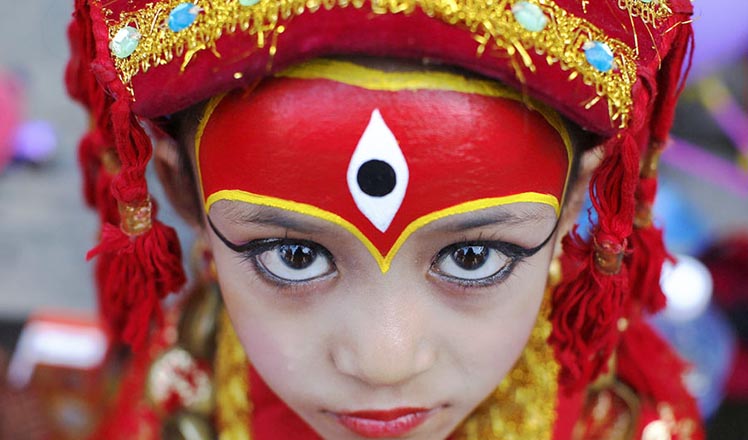Tracing the story of how Beijing became the capital
Updated: 2016-09-20 08:06
By Wang Kaihao(China Daily)
|
||||||||
Many people take Beijing's metropolitan status for granted.
An ongoing exhibition at the city's Capital Museum examines the process by which it became the national capital.
The Capital Cities of the Yuan Dynasty, which runs through December, displays 160 sets of relics from the Cap-ital Museum and 14 other museums and research institutions across northern China.
It marks the 740th anniversary of construction of Khanbaliq, the predecessor of today's Beijing, which was also known as Dadu (meaning "the great capital"). It was one of the capitals of the Yuan Dynasty (1271-1368), which was founded by Mongol ruler Kublai Khan five years later.
Because the empire was based upon the nomadic life-style of the grasslands, Yuan rulers established two capitals. The other is Xanadu or Shangdu (the upper capital) in what is today the Inner Mongolia autonomous region's Xilin Gol League.
According to the exhibition's curator, Tan Xiaoling, emperors headed to Xanadu in March or April for the sum-mer. They returned to Beijing in August or September.
The dynasty planned to build a third capital, Zhongdu (the middle capital), in today's Zhangbei county, Hebei province. But construction was suspended.
Cultural relics revealing the vicissitudes of all three capitals are juxtaposed at the exhibition.
"We want to show the dynasty's history and customs from a comprehensive perspective, from urban construction and the rulers' palace lives to various aspects of ordinary people's daily lives," says Tan.
"This is an unprecedented event to examine the Yuan's history by bringing so many precious items together. It'd be boring to simply introduce the three cities' history. That's why we focus on human stories. No matter how a city flourishes, its people are most important."
This is why the exhibition highlights Liu Bingzhong, the official who led Khanbaliq's construction, and Zhang Hongfan, a general once stationed in the city.
Displays include porcelain, textiles, gold artifacts, construction materials and figurines.
Many items have never been exhibited publicly. Others are familiar to those with a basic knowledge of China's fine art history.
Pieces include a pottery figure of a dancing man - the only of its kind from the period that has been discovered. A ceramic pillow with depictions of an opera stage, and a porcelain bowl adorned with lotus and tortoise patterns demonstrate the era's best craftsmanship.
A "magic square" from Zhongdu provides early evidence of Chinese use of Arabic numerals, says Gao Hongqing, who selected the show's relics.
It's arranged so the numbers in each of the six rows, six columns and secondary diagonals add up to the same sum.
A section of the show emphasizes religious inclusiveness during the Yuan Dynasty.
"Buddhism, Taoism, Islam and Christianity thrived," says Gao.
A ceramic epitaph inscribed with Nestorian doctrine and a cross-shaped bronze scepter proves Christianity's popularity in China during the period.
Gao says some relics came from county-level museums.
"Their collections may be smaller but are unique," he says.
Gold ornaments from Inner Mongolia's Aohan Banner Museum, for instance, reveal prosperity and the aesthetic sensibilities of Mongol nobles.
"The Yuan Dynasty existed for less than a century, so its relics are relatively few," says the museum's director, Guo Xiaoling. "China spent more time split than united before the dynasty. The Yuan created a solid foundation for lasting cohesion. So it's important to study."
One important aspect of this was Beijing's elevated status, the historian explains.
"Beijing was only a regional center before."
One way this can be seen outside of the exhibition is that some names of Khanbaliq's city gates like Anzhenmen and Jiandemen are still used - for subway stations, that is.
wangkaihao@chinadaily.com.cn
|
The Capital Cities of the Yuan Dynasty retraces Beijing's development to the present day.Wang Kaihao / China Daily |
(China Daily 09/20/2016 page20)
- People watch tide of Qiantang River in East China
- Chinese premier arrives in New York for UN conference
- Guangdong police block dangerous frozen meat
- Domestic worker numbers to increase as nation ages
- Full moon celebrates Mid-Autumn Festival
- Premier Li to address UN General Assembly, visit Canada, Cuba

 Unforgettable moments of Rio Paralympics
Unforgettable moments of Rio Paralympics
 Amazing animal-shaped buildings in the world
Amazing animal-shaped buildings in the world
 World in photos: Sept 12-18
World in photos: Sept 12-18
 People watch tide of Qiantang River in East China
People watch tide of Qiantang River in East China
 China launches second space lab into orbit
China launches second space lab into orbit
 Riding on smart cycles in Nanjing city
Riding on smart cycles in Nanjing city
 Britain records warmest September day since 1911
Britain records warmest September day since 1911
 Island retreats you may not want to miss for holidays
Island retreats you may not want to miss for holidays
Most Viewed
Editor's Picks

|

|

|

|

|

|
Today's Top News
Trump outlines anti-terror plan, proposing extreme vetting for immigrants
Phelps puts spotlight on cupping
US launches airstrikes against IS targets in Libya's Sirte
Ministry slams US-Korean THAAD deployment
Two police officers shot at protest in Dallas
Abe's blame game reveals his policies failing to get results
Ending wildlife trafficking must be policy priority in Asia
Effects of supply-side reform take time to be seen
US Weekly

|

|








